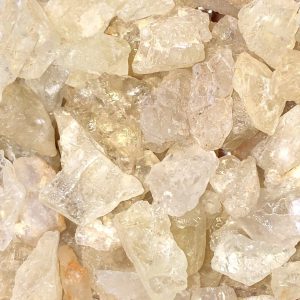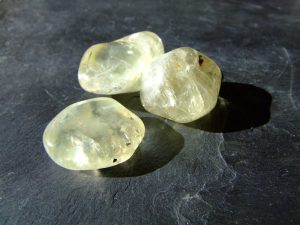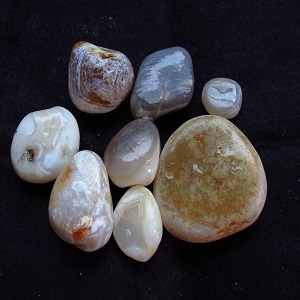History of amblygonitis

Stone sizes The largest amblygonite cut, cut from Brazilian material, is approximately 70 carats. The range of precious stones is usually from 1 to 15 carats
This name was named in 1817 by August Breithaupt after the Greek words “blunt” and “angle”. A member of the Amblygonite group, it has a three-ring crystal system
Characteristics of Amblygonite
Amblygonite has a gummy and oily polish with a full cleavage that makes this a very special stone and sets it apart from the rest. Amblygonite appears as a transparent or semi-transparent rock that occurs as a completely opaque and truncated form
It is found in a variety of shades, including milky white, yellow, pale green, light blue such as aquamarine, gray and beige. It may also be colorless when transmitted under light. Amblygonite has a very brittle texture and scores 5 to 6 on the Mohs hardness scale
Amblygonite gems are usually pale yellow in color. Although they are too soft and cutable to make ring stones
Amblygonitis care
Due to the relatively low hardness of amblygonites and montbrazites and complete cutting, avoid using mechanical cleaning methods such as steam and ultrasonic. Instead, use a soft brush, mild detergent, and warm water. Consult our gemstone jewelry cleaning guide for more advice

You are more likely to encounter these stones in mineral collections than jewelry collections
Meaning of Amblygonite
Its name derives from the Greek words meaning blunt and angular, because it was thought to have this cut, which has since been misdiagnosed. This rock is a mixture of a number of minerals, but contains a large amount of lithium, often around ten percent. It also contains other minerals such as sodium, aluminum and phosphate
This mineral is found in a wide range of colors: white, pink, green, blue, golden yellow. The hardness is 6 and its polish is glass. Amblygonite is crystallized in the triclinic crystallization system and good examples of its gem quality can be found in Brazil-America and many beautiful and purple varieties are found in Namibia. Most of its variety is yellow and may be confused with brazilianite and scapolite
Mineralogical characteristics of Amblygonite
Name: Amblygonite
Difficulty: 6
Crystallographic structure: triclinic

Formula: (Li, sodium) Al (PO4) (F, OH). Li is usually more than Na
A similar name for this mineral: Amblygonite is from the Greek ambolus meaning”blunt” and gonia for “angle”, referring to the shape of its crystals. Montebrasite is named after the French town of Montebras for its type
Occurrence: granitic pegmatites
Impurity components: usually cloud type components, usually clouds are placed in parallel bands
Colors: colorless, white, grayish white, yellow, reddish pink, tan, greenish, bluish, lilac
Fracture: uneven
Direction: 1 full direction, 1 good direction
Crystallography: triclinic crystals equivalent to short prismatic and rough faces. Conjoint twinning. Usually in separable masses
Refractive index: 1.578-1.633
Refraction: 0.020-0.022
Dispersion: 0.014-0.015
Luminescence: pale blue in SW (Keystone, South Dakota). Have bright orange or green in LW or pale brown in LW (Pala, California)
Absorption spectrum: not diagnostic
Optical sign: biaxial
Luminescence: Yes
Luminescence type: fluorescent, UV-Long, UV-Short
Polish: oily to pearly polish
Specific gravity: approximately 2.98-3.11. Amblygonite = 3.11; Montracite = 2.98. (Natromontebrasite * = 3.04-3.1)
Clarity: Clear to transparent
Amblygonite formation

Amblygonite and montbracite form a series of minerals. Fluorine (F)-bearing amblygonites are much rarer than hydroxyl (OH)-dominant montrazites. In addition, amblygonite has a biaxial optical signature (-), while montresite has a biaxial (+) optical signature. Many gemstones labeled as amblygonite in collections may deserve re-examination
Most of the yellow gems of this collection that can be found in collections and the market are Brazilian amblygonites. However, the rocks of Mogi dãs Cruzes, São Paulo, Brazil, are montresite
Very rare material from Karibib, Namibia shows a purple color. These stones also make beautiful face gems
Synthetic amblygonite
Using the hydrothermal method, scientists have synthesized amblygonites and montrasites, as well as intermediate members of their collections. However, jewelry uses for such gemstones are unknown. Pale yellow amblygonites may turn pale green with radiation therapy
Some sources of amblygonite

Custer County, South Dakota produces gem-quality amblygonite masses up to 200 tons. Tinton, South Dakota also produces non-gem materials in abundance
Most gem-quality amblygonites come from Brazil, where they occur in masses and fine yellow crystals
Other notable sources and mines are
United States: Arizona; Pala, California; New Mexico
Germany Sakangi, Myanmar; Varotrask, Sweden
Notable sources of quality gemstones include Montbras, France and the Caribbean, Namibia, as well as Brazil
United States: Newry, Maine (in crystals larger than 3 4 4 inches found in 1940-41, heavily containing small gems and givinghead)




